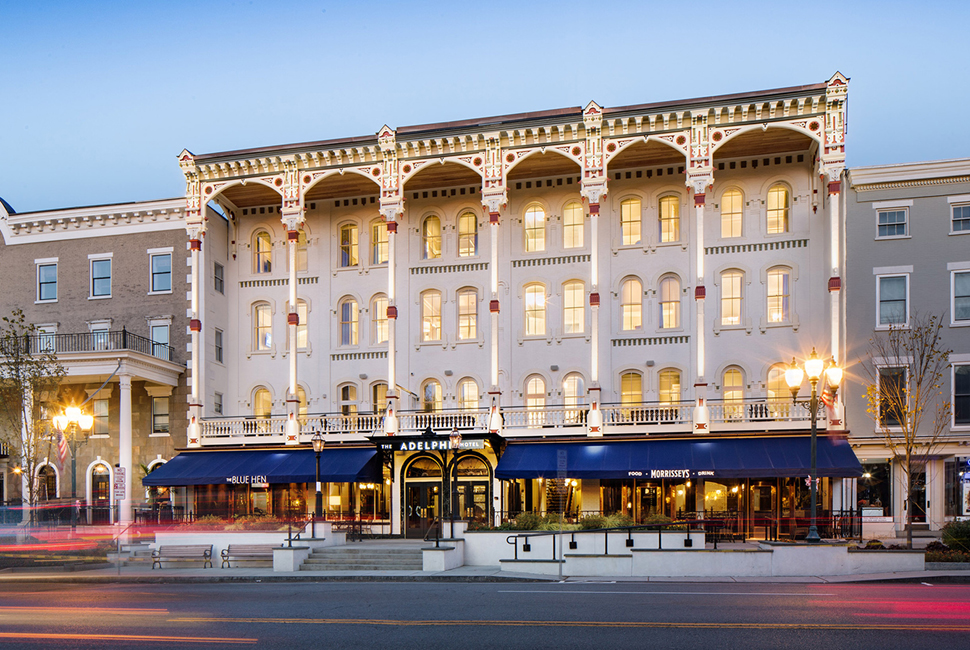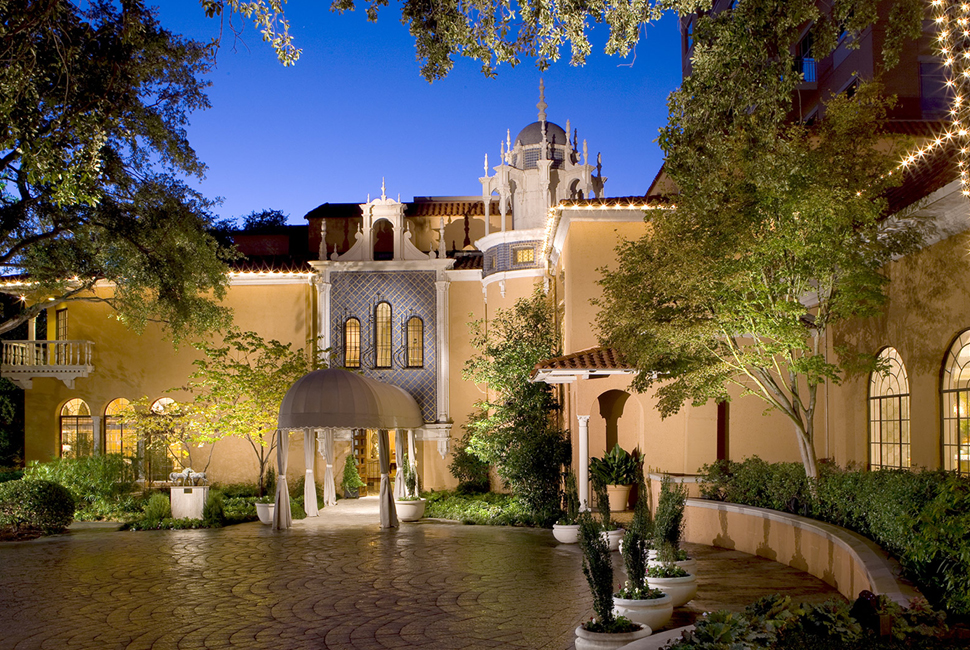

Historic hotels tend to have a special allure. They allow you to travel through time and imagine what it felt like to live in a different era, one far away from the stressors of modern-day life, when everything ran at a slower pace. However, it requires immense care and effort to preserve these beautiful glimpses into the past.
These five properties have accomplished the feat of maintaining the particular sensibility and character of the original architect’s design while allowing you to enjoy these prized relics.
The Cloister, Sea Island, Georgia
The extraordinary talent and vision of architect Addison Mizner — who was responsible for the dominance of the Mediterranean and Spanish Colonial Revivalist styles in Palm Beach and Boca Raton — helped the Forbes Travel Guide Five-Star hotel quickly become South Florida’s rival vacation destination for affluent families after opening in 1928.
The property on Georgia’s southern coast remained unchanged until Bill Jones III, a descendant of the original owner, decided the beloved building was overdue for renovation, but one that honored Mizner’s vision. With assistance from architect Peter Capone, The Cloister underwent extensive restructuring — guests now enter to find the Colonial Lounge encircled by multiple stories of terraces, flooded by the light of the clerestory-style ceiling. In his commitment to maintaining the nostalgic details of the original building, Capone ensured that the iconic front parlor appeared unchanged by using the same raw materials for the wood beam ceilings.

The Adelphi Hotel, Saratoga Springs, New York
The Adelphi Hotel’s first renovation in 1877 helped bring Saratoga Springs to life. The Victorian-style building was expanded to accommodate the city’s increasing popularity as a high-end destination for horse racing and gambling. It joined a host of other resorts, including The Grand Union Hotel, which once was the largest in the world. However, by the 1950s, most of these grand hotels were razed, except for The Adelphi.
The current owners rescued the building from demolition. The revival began with the reopening of the hotel’s bar. Then the rest of the property underwent an almost 20-year restoration process, keeping The Adelphi’s iconic exterior — the Victorian-era columns and second-floor porch — intact and modernizing each of the rooms to reflect the many interior design styles popular throughout the hotel’s long history.

The Mansion at Ocean Edge, Cape Cod
Debuted in 1890 as a home and rebuilt by architect Horace Frazer after a 1906 fire, The Mansion at Ocean Edge exemplifies the architectural style known as eclecticism — an intentional blend of the structures, decorations and materials of classical historical designs. Frazer used Spanish Colonial Revival-style stucco tiling for the exterior, imported Renaissance Revival-style Italian marble for interiors and the ornate carved oak Gothic Revival staircase for Fieldstone Hall, to which the property’s primary building was referred.
Real estate development company Corcoran Jennison purchased the mansion in the 1980s and took on the task of transforming the 52-acre beachfront property into Ocean Edge Resort & Golf Club while preserving the original manor’s remarkable details to serve as The Manor, a 90-room luxury hotel.

Rosewood Mansion on Turtle Creek, Dallas
The King family built its original Mission Revival-style manor in 1908. When a fire destroyed the home in 1923, the family called upon architect John Allen Boyle to rebuild to an even grander scale. Boyle accompanied the Kings as they traveled to Europe, gathering the materials and inspiration required to construct the opulent 16th-century Italian Renaissance-style manor they envisioned.
The estate eventually became one of Dallas’ most extravagant and historically significant homes, furnished with valuable antiques, like a pair of 19th-century Spanish carved cathedral doors for the grand entryway and an ornate 16th-century German fireplace in the oak-paneled library with carvings by Swiss artist Peter Mansbendel. French architect M. Jacques Caree designed the family’s dining room with a ceiling made of 2,400 pieces of enameled and inlaid wood and two 16th-century marble columns from the Palace of the Villa Madama near Rome. The home also boasted two engineering feats: the cantilevered marble staircase and Dallas’ first in-home elevator.
In 1979, the Dallas-based Rosewood group transformed the estate into a 143-room hotel, the brand’s first property.

The Garden City Hotel, Long Island
Charles Lindbergh slept at this Long Island landmark before departing on his famous transatlantic flight in 1927 and Jacqueline and John F. Kennedy stayed here in 1959 before JFK’s presidency. But The Garden City Hotel’s history traces further back to 1874. It began with Alexander Turney Stewart, who built the hotel in a traditional Victorian style. When he died in 1876, the property went to his wife Cornelia’s family, which, luckily, included acclaimed architect Stanford White, whose work includes the Washington Square Arch. White and his firm McKim, Mead & White — credited as a pioneer of modern urban architecture — redesigned the hotel in Dutch Colonial style and added a nine-hole golf course.
An 1899 fire destroyed the hotel, requiring the firm to rebuild once more. The style it selected, Georgian Revival, served as the most iconic version of the hotel. The original building was torn down in 1973, a tragic loss for the community. In 1983, Myron Nelkin purchased the property and rebuilt the fourth iteration of the hotel. Then in 2012, Morris Moinian and Fortuna Realty Group purchased the hotel and hired Italian designer Marcello Pozzi to modernize it in tribute to the property’s legacy of symbolizing the ever-evolving style of the times.
